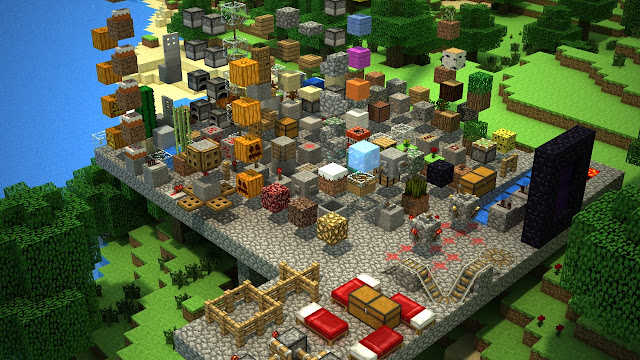For the renderings that have appeared on this blog so far I've been using
mcobj, which is the de facto standard for exporting Minecraft worlds to 3D packages. Unfortunately, it has two main drawbacks:
- It doesn't auto-apply any textures or generate any texture coordinates
- It only outputs blocks, so anything with a different geometry (fences, railroads, torches, etc.) will show up as a block instead of using the correct geometry
Since it was last updated on May 15th, I don't foresee these issues being resolved any time soon. I therefore decided to take matters into my own hand and since I had no particular desire to learn Go I started writing a Haskell version from scratch. A couple minutes ago I managed to export my first full chunck.
There's still plenty of stuff to do (currently it exports each face of each block even if it has a neighbour on that side, there's no geometry other than blocks yet and only a subset of materials are implemented yet), but it's a start.









